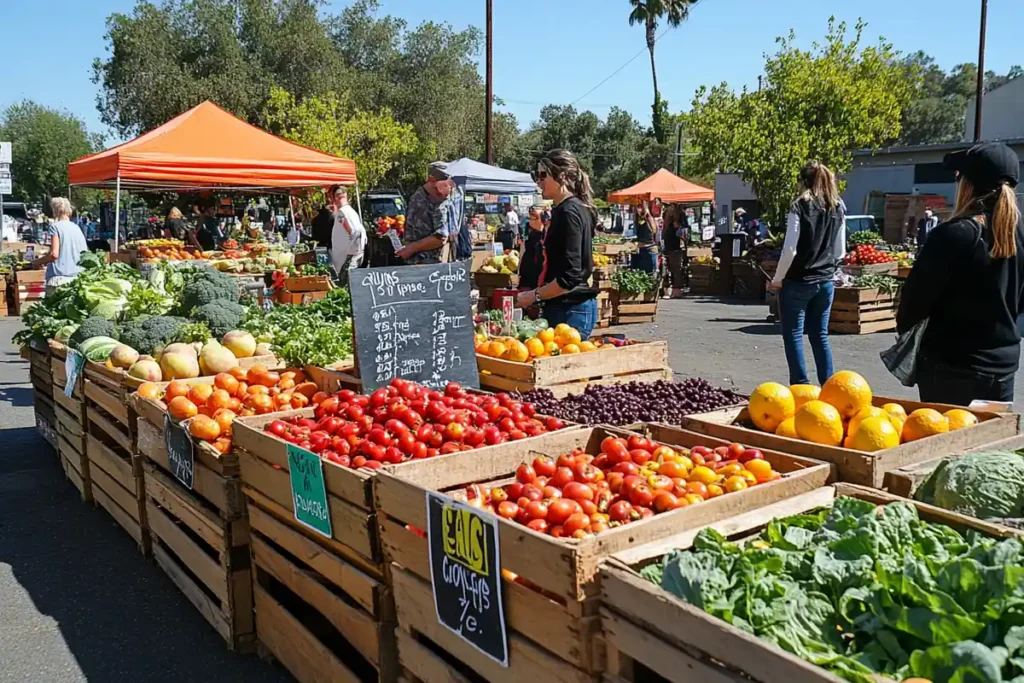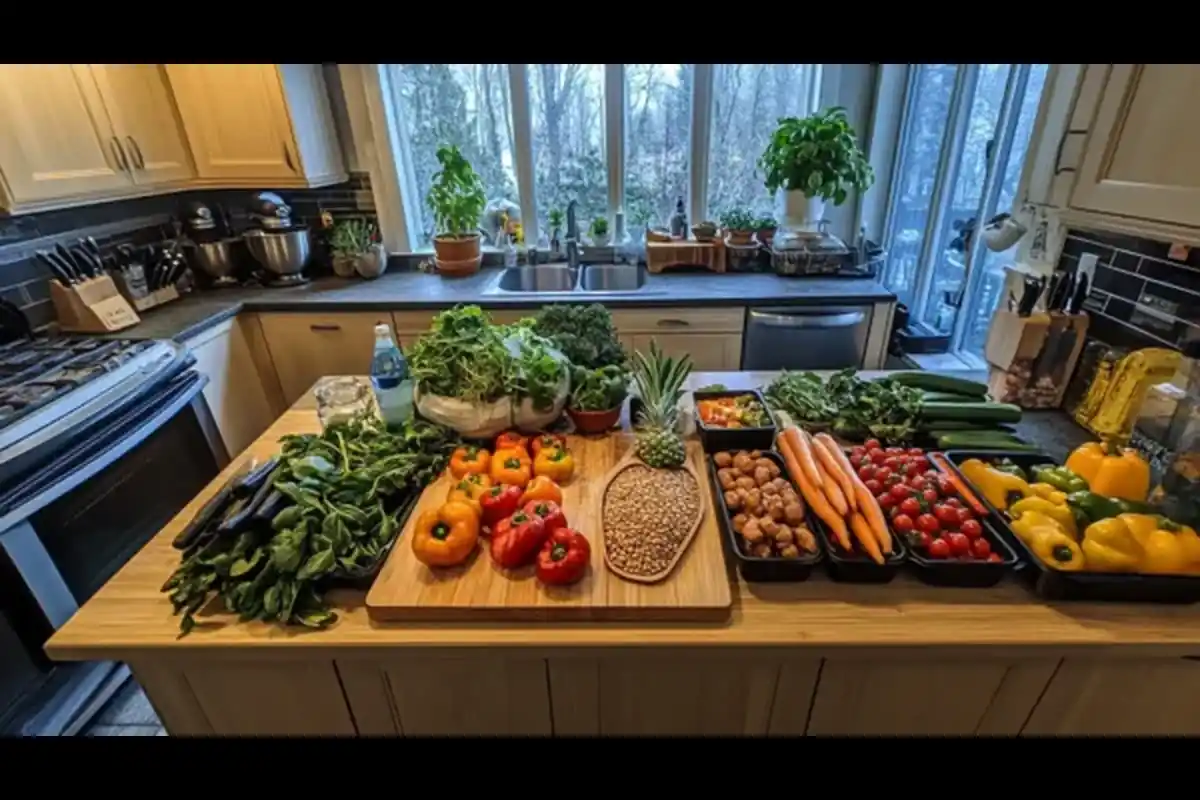Discover simple steps, essential nutrients, and easy meal plans on how to go raw vegan for beginners and start a thriving raw vegan lifestyle from scratch.
Understanding How to go raw vegan for beginners?
Many people feel curious yet uncertain about embracing a raw vegan lifestyle. How to go raw vegan for beginners? might seem complicated at first. However, by understanding the basics, anyone can start with confidence. Basically, raw veganism focuses on fresh, plant-based foods that are not heated above low temperatures. Consequently, nutrients remain intact, and flavors stay vibrant. Indeed, this approach can transform your health altogether. Eventually, you will find it simpler than expected.
Defining How to go raw vegan for beginners?
Initially, it helps to understand what raw vegan means. It involves eating fruits, vegetables, nuts, seeds, and sprouts in their natural state. Thus, no cooking at high heat occurs. Instead, minimal processing ensures that nutrients and enzymes remain active. Equally important is focusing on whole, natural ingredients. Another aspect involves avoiding refined sugars, processed grains, and packaged products. Essentially, it involves returning to food in its purest form.
To understand if this lifestyle aligns with your goals, read Can You Survive as a Raw Vegan? Essential Tips and Insights.
Benefits of Embracing a Raw Vegan Lifestyle
Undoubtedly, adopting a raw vegan way of life can offer several health benefits. For instance, many people experience improved digestion, clearer skin, and increased energy. Furthermore, a raw vegan diet may support healthy weight management because of its fiber-rich content. If weight loss is among your goals, explore Can You Lose Weight on a Raw Vegan Diet? for insights. Additionally, you might notice better mood and mental clarity. Eventually, your body often thrives on nutrient-dense foods. Comparatively, conventional diets may leave you feeling sluggish, while raw veganism often helps you feel revitalized.
Common Misconceptions About Raw Veganism
However, raw veganism is sometimes misunderstood. Some believe it is too restrictive. Nonetheless, the variety of fruits, vegetables, nuts, and seeds is immense. Conversely, others worry about protein intake, but raw sources like hemp seeds, almonds, and lentil sprouts provide plenty. Moreover, taste need not suffer because you can craft delicious meals with creative seasonings. Indeed, many raw vegan recipes rival cooked dishes in flavor and texture. Finally, remember that raw veganism can adapt to your lifestyle, making it more flexible than it first appears.
If you’re curious about the health implications, Is Raw Vegan Diet Anti-Inflammatory? offers valuable insights.
Nutritional Basics for How to go raw vegan for beginners?
Afterward, it is crucial to understand the nutrients involved. How to go raw vegan for beginners? means focusing on nutrient density. Consequently, ensure you consume enough protein, healthy fats, and carbohydrates. Equally, prioritize micronutrients and fiber. Altogether, a balanced raw vegan diet can deliver all the essentials, provided you choose wisely. Eventually, as you gain experience, you will master the art of nutritional balance.
Key Nutrients in How to go raw vegan for beginners?
Specifically, raw vegans should consider their intake of essential amino acids, omega-3 fats, and critical minerals like calcium and iron. Likewise, vitamin B12 deserves special attention. Generally, B12 supplements are advisable. Additionally, pay attention to vitamin D during colder months. Basically, focus on leafy greens, sprouts, algae, and seeds for abundant micronutrients. Particularly, sprouts and microgreens are nutrient powerhouses. Indeed, variety ensures you get everything needed.
Macronutrients: Balancing Fats, Proteins, and Carbs
Equally important is balancing your macronutrients. Comparatively, fruits and vegetables provide carbohydrates. Meanwhile, nuts, seeds, and avocados supply healthy fats. Finally, raw protein sources include nuts, seeds, and sprouted legumes. Conversely, relying too heavily on one macronutrient can create imbalances. Therefore, aim for a wide range of foods. Undoubtedly, a balanced approach supports stable energy and overall wellness.
Micronutrients: Vitamins, Minerals, and Phytonutrients
Furthermore, a raw vegan diet offers abundant vitamins, minerals, and plant compounds. Hence, prioritize dark leafy greens like kale and spinach. These contain magnesium, iron, and folate. Additionally, citrus fruits provide vitamin C, while berries deliver antioxidants. Indeed, colorful produce ensures a broad spectrum of phytonutrients. Consequently, you boost your immune system and support cellular health. Ultimately, you nourish your body at every level.
Shopping Strategies for How to go raw vegan for beginners?

Nonethless, knowing where and how to shop makes a difference. How to go raw vegan for beginners? involves selecting the freshest produce and quality pantry staples. Certainly, farmer’s markets often offer locally grown, organic produce. Eventually, you learn which stores carry the best ingredients. Meanwhile, keeping costs low can be a concern. However, by shopping smartly and focusing on seasonal foods, you can stay within budget while enjoying top-notch flavors.
Stocking Your Pantry for How to go raw vegan for beginners?
Initially, start with staples like raw almonds, walnuts, chia seeds, hemp seeds, and flax seeds. Additionally, store dried fruits such as dates or figs for natural sweetness. Subsequently, consider superfoods like spirulina or maca powder for added nutrients. Meanwhile, do not forget fresh produce. Essentially, keep a variety of leafy greens, root vegetables, and seasonal fruits. Eventually, a well-stocked pantry makes raw meal prep easier and more enjoyable.
Choosing Fresh, Organic Produce
Comparatively, organic produce helps limit exposure to pesticides. Indeed, investing in quality ingredients ensures the best taste and nutrient density. However, if organic options are limited, washing and peeling can help reduce residues. Conversely, focus on the “Dirty Dozen” and “Clean Fifteen” lists to prioritize which fruits and vegetables to buy organic. Finally, choose ripe, vibrant produce that appeals to your senses. Undoubtedly, freshness matters for flavor and nutrition.
Cost-Effective Shopping Tips
Naturally, buying in bulk can reduce costs. For example, large bags of nuts, seeds, and dried fruits often come at a lower price per pound. Equally, consider seasonal produce for better deals and superior quality. Furthermore, freeze ripe bananas and berries for smoothies, reducing food waste. Eventually, plan your meals to avoid unnecessary purchases. Indeed, a thoughtful approach saves money and ensures variety, making raw veganism more accessible.
Meal Planning and Preparation
While how to go raw vegan for beginners? is often asked, knowing how to prepare meals is also vital. Basically, start with simple recipes. Likewise, plan ahead to avoid last-minute hunger and poor choices. Another key point is keeping your kitchen organized. Moreover, invest in tools like a quality blender or food processor. Undoubtedly, proper planning turns raw ingredients into satisfying, nourishing meals. Eventually, you gain confidence and start experimenting with new flavors.
Essential Kitchen Tools
Especially in raw vegan cuisine, tools matter. For instance, a high-speed blender creates creamy smoothies and sauces. Additionally, a food processor helps make nut butters, dips, and pâtés. Likewise, a spiralizer transforms vegetables into noodles. Meanwhile, dehydrators can produce raw crackers and granola. Chiefly, these tools expand your recipe repertoire. Ultimately, having the right equipment saves time and improves meal quality.
Preparing Simple Raw Meals
Initially, begin with easy dishes. Perhaps start your day with a green smoothie blending kale, spinach, mango, and chia seeds. Conversely, prepare a raw salad with leafy greens, sliced tomatoes, avocados, and hemp seeds. Add a simple lemon-tahini dressing. Furthermore, enjoy a fruit bowl for dessert, mixing berries, kiwi, and passion fruit. Eventually, your creativity grows, allowing you to try raw wraps, zucchini pasta, or raw soups. Indeed, small steps build culinary confidence.
Enhancing Flavors and Textures
However, some people worry about blandness. Nonetheless, flavor lies in herbs, spices, and natural seasonings. Add fresh basil, cilantro, ginger, or garlic to enhance taste. Moreover, incorporate healthy fats from avocados or nuts for richness. Equally, marinate vegetables or use citrus juices and apple cider vinegar for tang. Consequently, you learn to combine textures and flavors that keep your meals interesting. Ultimately, enjoy a wide variety of taste experiences.
Overcoming Challenges

While you now know how to go raw vegan for beginners?, it is normal to face hurdles. Eventually, social events, cravings, and adjusting to new habits can test your resolve. Nonetheless, a gradual transition often works best. Additionally, seek support from friends, online communities, and local groups. Undoubtedly, you can handle obstacles more easily with proper guidance.
For insights into overcoming other kitchen challenges, Do You Wash Diced Chicken Before Cooking? provides helpful preparation techniques that can also apply to raw meal planning.
Transitioning Gradually
Initially, start by adding more raw fruits and vegetables to your existing meals. Consequently, reduce cooked foods over time. Indeed, this approach eases your palate into new flavors. Furthermore, begin each morning with a raw smoothie or fruit bowl. Equally, try a raw salad before your regular lunch. Eventually, as your taste preferences adapt, you will rely less on cooked items. Thus, transitioning gradually prevents feelings of deprivation.
Dealing with Social Situations
However, social gatherings may present challenges. Perhaps friends question your choices, or you find limited raw options at restaurants. Nevertheless, plan ahead and communicate with hosts. Moreover, bring a raw dish to share. Consequently, you introduce others to your lifestyle. Additionally, search menus for salads or fruit plates. Eventually, confidence grows, and you navigate social situations with ease. Comparatively, as plant-based diets become more mainstream, options also improve.
Finding Reliable Support and Guidance
Likewise, seeking support helps you stay motivated. Thus, join raw vegan forums or follow influencers who share tips, recipes, and inspiration. Another strategy is consulting a nutritionist specializing in plant-based diets. Indeed, expert guidance ensures you meet your nutritional needs. Furthermore, connecting with like-minded individuals fosters encouragement and accountability. Undoubtedly, reliable information and community support make the journey smoother.
Staying Motivated and Tracking Progress
Altogether, staying motivated is key. Accordingly, track your progress and celebrate improvements. Perhaps note how your energy levels rise or skin clears. Eventually, reflect on the positive changes. Consequently, motivation strengthens, helping you overcome setbacks. Moreover, remember why you chose raw veganism: health, ethics, or environmental reasons. Likewise, focus on your goals to maintain momentum.
Keeping a Food Journal
Specifically, documenting what you eat offers insight. Initially, record each meal, noting ingredients, portions, and your mood afterward. Consequently, identify patterns that influence energy levels or digestion. Additionally, a journal shows your progress over time. Thus, it becomes an effective tool for making adjustments. Eventually, reviewing your entries encourages continuous improvement. Undoubtedly, tracking helps refine your diet.
Monitoring Your Health
Furthermore, pay attention to your body. If you experience fatigue or cravings, reassess your nutrient balance. Nevertheless, remember to seek medical advice if concerns arise. Likewise, regular check-ups and blood tests ensure you remain healthy. Finally, monitoring encourages proactive changes before issues escalate. Indeed, informed decisions support long-term well-being.
Celebrating Milestones
Conversely, do not overlook achievements. Moreover, recognize when you master a new recipe or reach a nutritional goal. Indeed, reward yourself with something meaningful, like a new kitchen gadget or a relaxing activity. Consequently, positive reinforcement keeps you enthusiastic about your journey. Eventually, celebrating milestones provides a sense of accomplishment. Thus, you remain inspired to continue.
Frequently Asked Questions about How to go raw vegan for beginners?
Many beginners have questions when starting a raw vegan lifestyle. Subsequently, addressing these FAQs can clarify doubts and provide actionable tips.
How to start being raw vegan?
Basically, start small. Initially, add more fresh fruits and vegetables to your daily meals. Furthermore, replace processed snacks with nuts, seeds, or dried fruits. Eventually, dedicate one meal a day to entirely raw ingredients. Another approach is exploring simple raw recipes online. Undoubtedly, gradual changes help you adapt without feeling overwhelmed. Consequently, you build confidence and set the foundation for lasting habits.
What happens when you start eating raw vegan?
Chiefly, you may notice changes in digestion, energy levels, and mood. Comparatively, many newcomers report feeling lighter and more alert. Equally, your body adjusts, and cravings for processed foods may diminish. Nevertheless, everyone’s experience differs. Eventually, you find improved gut health, clearer skin, or better sleep. Certainly, some encounter detox symptoms like mild headaches. However, these typically subside as your body adapts.
Do raw vegans eat potatoes?
Whereas potatoes can be eaten raw, they contain starch that is harder to digest uncooked. Consequently, raw vegans often avoid regular potatoes. However, sweet potatoes may be enjoyed raw if finely shredded or marinated. Alternatively, consider other root vegetables like carrots or beets for added variety. Indeed, focus on produce that feels natural and tasty when uncooked. Eventually, discover which raw foods suit your body best.
How to start a raw diet for humans?
Initially, focus on whole, unprocessed fruits and vegetables. Likewise, incorporate sprouts, nuts, and seeds for protein and healthy fats. Eventually, learn basic raw recipes and invest in simple kitchen tools. Consequently, experiment with flavors and textures. Meanwhile, read about nutrition and consider expert guidance. Ultimately, a successful raw diet involves balanced nutrients and enjoyable meals. Indeed, patience and consistency pave the way.

